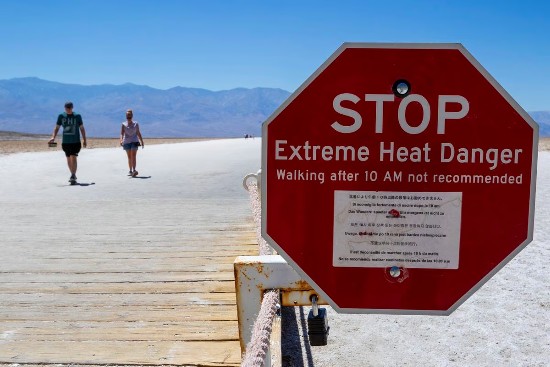This month is hotter than anything humans have experienced since the dawn of the Agricultural Revolution over 12,000 years ago. Climatologists state that atmospheric temperatures last reached these heights during an interglacial period during the Pleistocene 125,000 years ago. And record temperatures are no longer just being measured in the atmosphere. The oceans are also warmer with record temperatures being set in the northern hemisphere’s Atlantic and Pacific Oceans.
At the current rate of warming by 2100 large areas of the planet will be inhospitable to humans. In a Times article that appeared on July 6th, 2023, Jeff Goodell writes that by 2100: “Temperatures in parts of the world could rise so high that just stepping outside for a few hours…will result in death even for the fittest of humans.”
Humans are warm-blooded. In a world where one would encounter extremes of heat and cold, warm-bloodedness meant we could regulate our internal body temperature without the need for an external heat source. This provided survival advantages to us, and all warm-blooded creatures including our mammal cousins, birds, and yes, even Great White Sharks, giving us abilities to live across a wide range of habitats, from polar extremes to equatorial tropics.
Humans originated in the tropics. When we migrated to cooler areas of the planet, our appearance changed. In the tropics, our skin was darkened by melanin, a pigment that protected us from overheating. As we moved to higher latitudes, melanin no longer conferred on us an evolutionary advantage. So lighter-skinned humans became predominant in places like temperate Europe and Asia. This allowed humans to gain benefits from the weaker sunlight and the heat it conferred on them in these more temperate habitability zones. And that’s why humans originating from different parts of the planet look different today. We are all the same species, but the variability has led us to describe ourselves using a term unique to us, race.
More than at any time in human history has our species been so mobile. The evolutionary advantages that make us better suited to hot environments versus cold ones don’t travel well. And with the world’s atmosphere at its hottest in more than 125,000 years, before humans began our great migration from Africa to become widely distributed across the planet, we are at increasing risk from rising heat.
Our technological accomplishments have led to air conditioning and other inventions to deal with heat extremes. But unless we plan to remain indoors, life on Earth for our species is getting dangerous. The heat could kill us.
In today’s Globe and Mail, there is an article about tourists flocking to Death Valley, California, the hottest destination in North America if not the planet. Mid-day temperatures this weekend will surpass 54.4 Celsius (129.92 Fahrenheit). All over the national park are signs like the one seen in the image at the top of this article. The signs advise visitors to stay indoors after 10 a.m. Night temperatures outside stay well above 30 Celsius (86 Fahrenheit). There is no outdoor relief from the heat. No shade trees. Just hot rocks relentlessly exposed to the sun. Yet more than 1.1 million visit the park annually with 20% choosing to come during the summer months when temperatures peak. Not much can live outside when the air exceeds half the boiling point of water.
The visitors who go to Death Valley in the summer are similar to the ones who climb Mount Everest, or after an earthquake hang around shorelines gawking as tsunami waves approach. It appears to be a human attribute in some to run towards and not away from danger.
And now with global temperatures on the rise, the places to run to are fewer. Could the Canadian Arctic become a haven for humanity if we continue to influence the global climate negatively? It is less a matter of if it will happen, and more like when it will happen.
Already, areas of North Africa through to the Middle East, Iran, Pakistan, and Northern India are tilting towards uninhabitability. And as tropical temperatures march poleward, a growing zone of uninhabitability may be with us for several millennia or longer until we finally put an end to industrial pollutants and the contribution they are making to warming the planet.
















